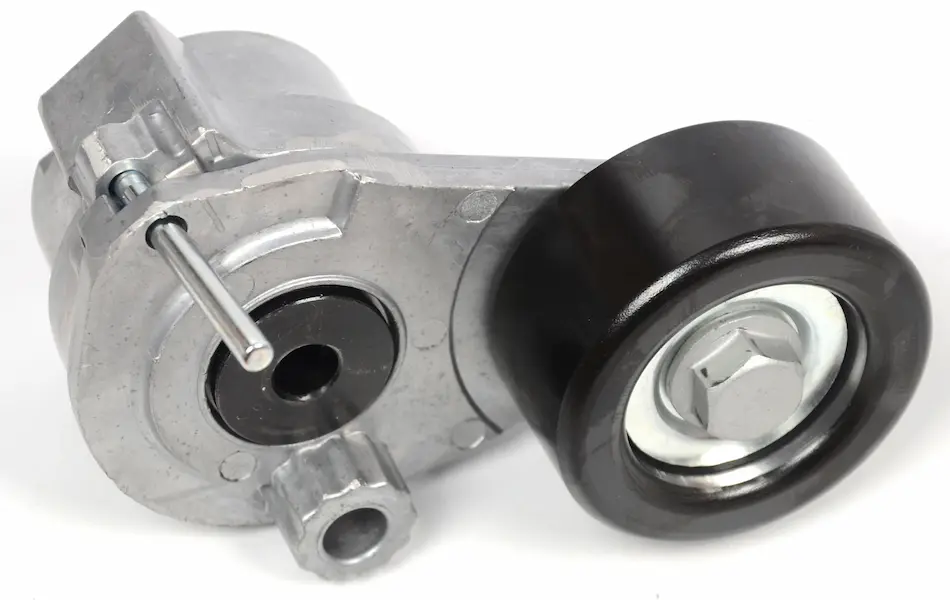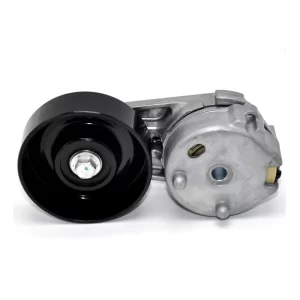In the realm of automotive and industrial machinery, the smooth and efficient operation of engines, belt-driven systems, and various mechanical assemblies is paramount. Central to these systems are components known as tensioner and idler bearings. These bearings, though often overlooked, play a critical role in ensuring the proper functioning of belt-driven systems by maintaining the correct tension, guiding the belt, and reducing friction. This article delves into the advantages of tensioner and idler bearings, highlighting their importance in enhancing the reliability, performance, and longevity of machinery.
1. Ensuring Optimal Belt Tension
One of the primary functions of a tensioner and idler bearing is to maintain the correct tension in a belt-driven system. Belts, whether in automotive engines or industrial machinery, are responsible for transmitting power between various components, such as the crankshaft, alternator, and air conditioning compressor. However, over time, belts can stretch due to wear, temperature fluctuations, and load variations. This stretching can lead to a loss of tension, resulting in slippage, reduced efficiency, and even belt failure.
Tensioner bearings are designed to automatically adjust and maintain the optimal tension in the belt, compensating for any stretching that occurs. This self-adjusting feature ensures that the belt remains tight and aligned, preventing slippage and ensuring efficient power transmission. By maintaining the correct tension, tensioner bearings help reduce wear on the belt and other components, extending their lifespan and minimizing the need for frequent maintenance.
2. Reducing Friction and Wear
Both tensioner bearings are essential in reducing friction within belt-driven systems. Friction is a significant factor in the wear and tear of mechanical components. In belt-driven systems, friction between the belt and the pulleys can lead to overheating, increased energy consumption, and premature wear of both the belt and the pulleys.
Idler bearings, which are mounted on idler pulleys, serve as a guide for the belt, ensuring it follows the correct path and maintains contact with the drive and driven pulleys. These bearings are designed to minimize friction by providing a smooth, low-resistance surface for the belt to move over. This reduction in friction not only improves the efficiency of the system but also reduces heat generation, which can be detrimental to both the belt and the surrounding components.
Tensioner bearings, by maintaining proper tension, also contribute to reducing friction. A properly tensioned belt runs smoothly and consistently, minimizing the amount of contact force between the belt and the pulleys. This reduces the overall friction in the system, leading to less wear and tear on the components, longer belt life, and improved overall performance.
3. Enhancing System Reliability
Reliability is a critical factor in any mechanical system, whether it’s in an automobile, industrial machinery, or heavy equipment. The failure of a single component can lead to costly downtime, expensive repairs, and, in some cases, catastrophic damage to the entire system. Tensioner and idler bearings play a crucial role in enhancing the reliability of belt-driven systems.
By maintaining proper tension and reducing friction, these bearings help prevent belt slippage, misalignment, and premature wear. This ensures that the belt-driven system operates smoothly and efficiently, reducing the likelihood of unexpected failures. Moreover, tensioner and idler bearings are typically designed to withstand harsh operating conditions, such as high temperatures, heavy loads, and exposure to contaminants like dust and moisture. Their durability and resistance to wear make them a reliable choice for various applications, from automotive engines to industrial conveyor systems.
In addition to preventing belt failure, tensioner and idler bearings also contribute to the longevity of other components in the system. For example, in an automotive engine, a well-functioning tensioner bearing ensures that the timing belt or serpentine belt remains properly aligned and tensioned, preventing excessive wear on the pulleys, alternator, water pump, and other accessories. This not only extends the life of these components but also reduces the risk of costly repairs and maintenance.
4. Improving Efficiency and Performance
Efficiency is a key consideration in any mechanical system, especially in industries where energy consumption and operational costs are critical factors. Tensioner and idler bearings contribute to improved efficiency and performance in several ways.
Firstly, by maintaining optimal belt tension, tensioner bearings ensure that the belt-driven system operates at peak efficiency. A properly tensioned belt transmits power more effectively, reducing energy losses due to slippage or misalignment. This leads to improved fuel efficiency in automotive applications and reduced energy consumption in industrial settings.
Secondly, the reduction in friction achieved by both tensioner and idler bearings enhances the overall performance of the system. With less friction, the system requires less power to operate, resulting in smoother operation and reduced strain on the engine or motor. This can lead to better acceleration, improved responsiveness, and quieter operation in automotive applications, while in industrial settings, it can result in higher productivity and lower operational costs.
Finally, tensioner and idler bearings contribute to a more consistent and reliable performance over time. By preventing issues such as belt slippage and misalignment, these bearings help maintain the optimal functioning of the system, ensuring that it operates at its best throughout its lifespan. This consistency in performance is particularly important in applications where precision and reliability are critical, such as in manufacturing processes or high-performance engines.
5. Simplifying Maintenance and Reducing Downtime
Maintenance is an inevitable part of operating any mechanical system, but minimizing the frequency and complexity of maintenance tasks can significantly reduce downtime and associated costs. Tensioner and idler bearings are designed to simplify maintenance and extend the intervals between servicing.
One of the key advantages of tensioner bearings is their ability to automatically adjust the belt tension as needed. This self-adjusting feature eliminates the need for manual tension adjustments, reducing the time and effort required for maintenance. In many cases, the tensioner bearing is designed to last the life of the belt, meaning that it only needs to be inspected or replaced when the belt is due for replacement.
Idler bearings, while not self-adjusting, are typically designed for long service life and easy replacement. Their role in guiding the belt and reducing friction means that they experience relatively low wear compared to other components. When replacement is necessary, idler bearings are often easy to access and replace, minimizing downtime and maintenance costs.
Additionally, the durability and reliability of tensioner and idler bearings reduce the likelihood of unexpected failures, which can lead to costly unplanned downtime. By ensuring that the belt-driven system operates smoothly and efficiently, these bearings contribute to a more predictable and manageable maintenance schedule.
6. Versatility and Wide Range of Applications
Tensioner and idler bearings are highly versatile components used in a wide range of applications, from automotive engines to industrial machinery and beyond. Their ability to maintain proper belt tension, reduce friction, and enhance reliability makes them suitable for various types of belt-driven systems.
In automotive applications, tensioner bearings are commonly used in serpentine belt systems, timing belt systems, and accessory drive systems. These systems power critical components such as the alternator, water pump, power steering pump, and air conditioning compressor. The reliability and efficiency of these systems are essential for the overall performance and safety of the vehicle.
In industrial settings, tensioner and idler bearings are used in conveyor systems, packaging machinery, printing presses, and other equipment that relies on belt-driven mechanisms. Their ability to withstand harsh operating conditions, such as high temperatures, heavy loads, and exposure to contaminants, makes them an ideal choice for demanding industrial applications.
Furthermore, tensioner bearings are available in a variety of designs and materials, allowing them to be tailored to specific applications. For example, some tensioner bearings are equipped with dampening mechanisms to reduce vibrations, while others are designed with high-temperature-resistant materials for use in extreme environments. This versatility ensures that tensioner and idler bearings can meet the unique requirements of different industries and applications.
Concluzie
Tensioner bearings may be small components, but their impact on the performance, reliability, and efficiency of belt-driven systems is substantial. By maintaining proper belt tension, reducing friction, enhancing reliability, and simplifying maintenance, these bearings play a crucial role in ensuring the smooth operation of automotive engines, industrial machinery, and other mechanical systems. Their versatility and ability to perform under challenging conditions make them indispensable in a wide range of applications. As technology continues to evolve, tensioner and idler bearings will remain essential components, contributing to the continued advancement and success of various industries.




